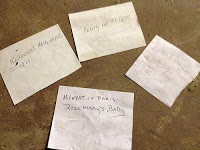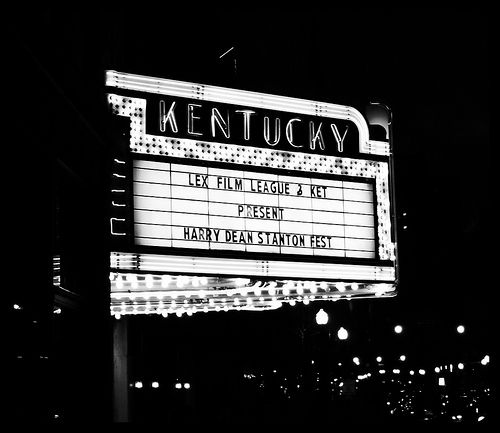 |
| Kentucky Theatre Marquee – Lexington, Ky. |
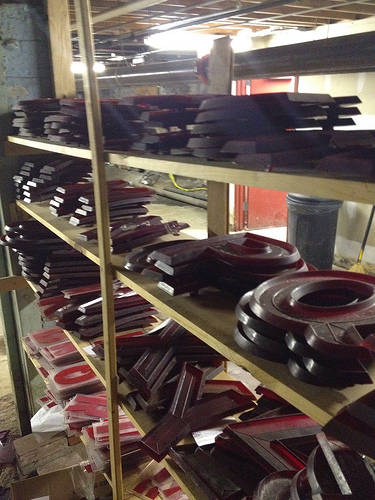 |
| Shelves of Letters for the Marquee at the Kentucky Theatre – Lexington, Ky. |
The familiar marquee on Main Street identifies the only remaining of Lexington’s great, old theaters. Named as “a credit to Lexington and the entire State,” the Kentucky Theatre opened in 1922. At the time, the Kentucky was one of several theaters in the community of 40,000. The Ben Ali and the Strand also welcomed moviegoers, but none with the grandeur that was offered at the Kentucky Theatre. With its original space intact, the Kentucky Theatre is described by Steve Brown (President, Kentucky’s Mighty Wurlitzer) as “the most important cultural and civic space in the city.”
The ceiling originally featured a massive stained glass dome which was complimented with back-lighting that changed with the ‘mood’ of the film. To the best of anyone’s recollection, the stained glass was removed because the promoters of The Sound of Music thought that the glass dome had an adverse effect on acoustics. The Kentucky was designed for motion pictures and even was capable of showing the new “talkies”; the theatre was one of the first fifty theaters in America to feature sound. All these special effects, all in 1922.
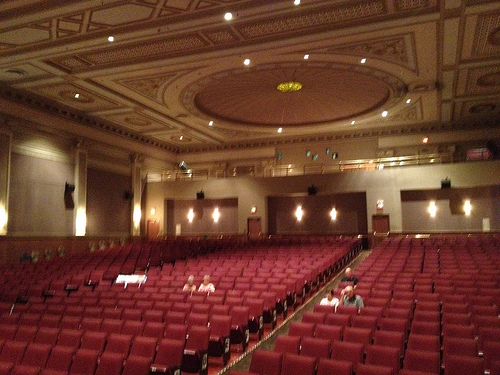 |
| Interior of the Kentucky Theatre – Lexington, Ky. |
And all in a beautiful Italian Renaissance styled theatre opened as the premier movie house for Lexington by the Swiddow family. Even with management changes and numerous changes in customer demands, the Kentucky Theatre has only had one pause in operation over the past 90 years.
In 1987, a neighboring restaurant experienced a fire that caused significant damage to the Kentucky. Through a dedicated group of patrons and local leaders, the Kentucky would not remain closed. A grand reopening in 1992 revealed a beautifully restored theatre that continues to receive updates. A major renovation is planned in conjunction with the theatre’s 90th anniversary. This will be coupled with the complete restoration and reinstallation of the Kentucky’s Mighty Wurlitzer organ that first played there when the theatre opened in 1922.
Lexington in 1922, however, had its own skeletons. In particular, Lexington shares that southern sin of segregation. Since it opened, the Kentucky Theatre has had a single level and thus no feasible method for separating blacks from whites. This was not a progressive step; it was a design intended to prevent the attendance by blacks at films shown at the Kentucky. When the Kentucky’s smaller sister theatre was opened next door in 1929, it featured a balcony which allowed Lexington’s black community to appreciate the ‘old Spanish’ architectural style of the State Theatre.
Of course, times have changed through the years. Fortunately, segregation has ended. The balcony has been removed from the State Theatre.
In time, the seating capacity of the Kentucky srunk from 1,108 to 805. The stalwart manager, Fred Mills, has worked at the theaters since 1963. And the ever-popular Rocky Horror Picture Show is often a sellout at recent history’s highest grossing theater for the film. The theaters have served also as the site for weddings and funerals, for political debates, and the weekly Woodsongs Old Time Radio Hour.
Yes, the Kentucky Theatre’s cultural and civic role in Lexington has been and is incredibly rich. And if these walls could only talk. Fortunately, the basement’s floor does. There one can find shelves of letters for the marquee while on the floor there are scribbled notations reminding the signer of the letters needed. The films named with these letters include the greatest works of cinematic art this country and world have offered.
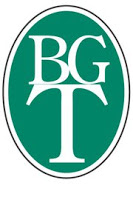
The Bluegrass Trust for Historic Preservation hosts a monthly deTour for young professionals (and the young-at-heart). The group meets on the first Wednesday of each month. Our September gathering will be at the University of Kentucky’s Spindletop Hall on Ironworks Pike. Join us there at 6:30 p.m.; learn more details on Facebook! You can see Kaintuckeean write-ups on previous deTours by clicking here.

